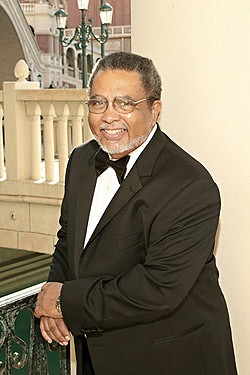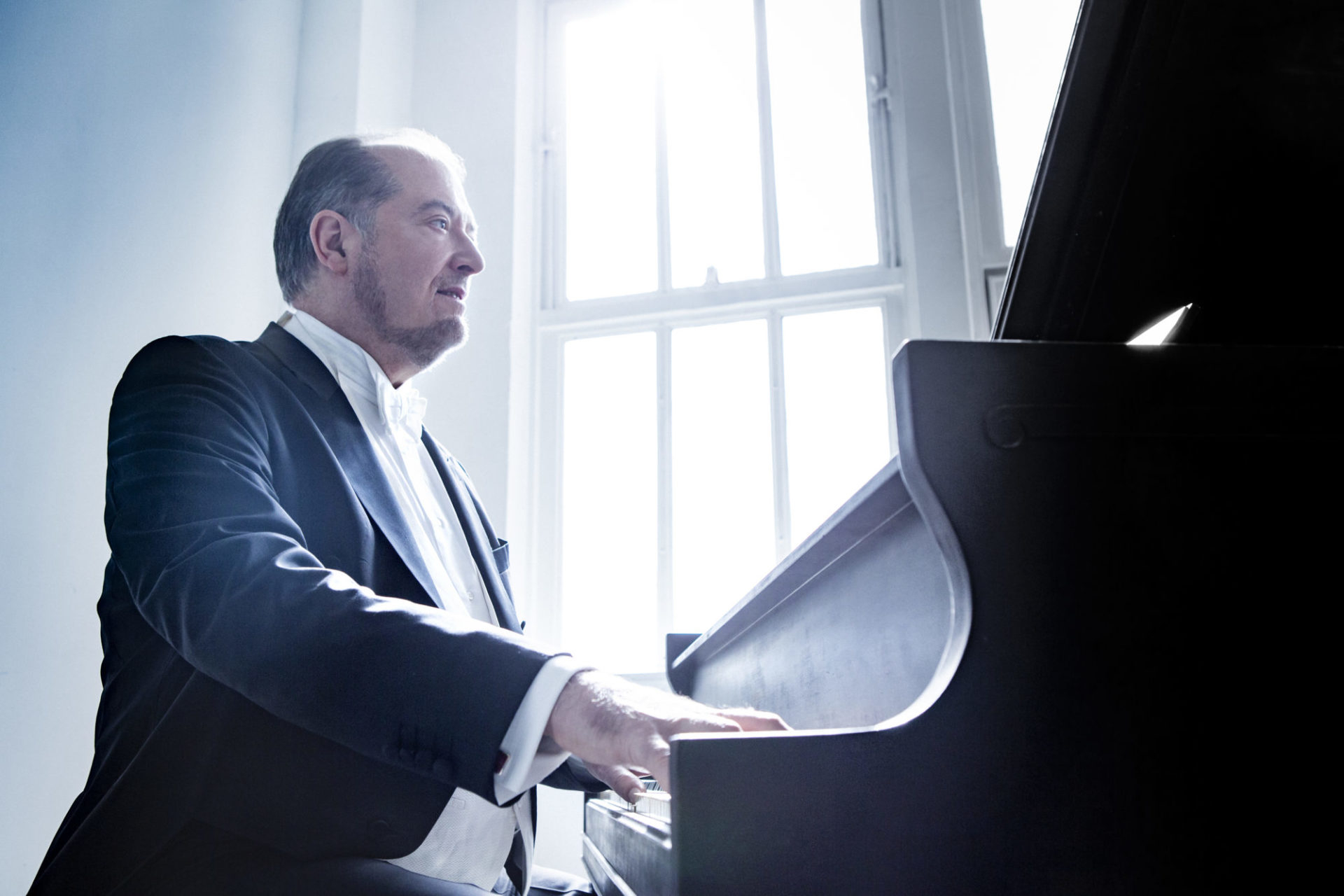At the Schermerhorn...
Nashville Starts the Season with Tchaikovsky, Barber, and Hailstork
On Friday, September 13, the Nashville Symphony opened their 2019-2020 season spectacularly with Tchaikovsky’s Fifth, Samuel Barber’s piano concerto with guest soloist Garrick Ohlsson, and Adolphus Hailstork’s An American Port of Call, all conducted by Maestro Giancarlo Guerrero. While these pieces appear to be musically unrelated, their composers are tied together through their issues with cultural identity. Both Adolphus Hailstork and Samuel Barber focus heavily on “the singing line” in their compositions, with Barber borrowing heavily from the Russian piano style to do so. Barber’s involvement in both the singing line and Russian piano tradition provided an excellent segue to Tchaikovsky’s Fifth, as it grapples with using distinctly Russian sounds in a world dominated by the western European tradition.
As is customary in many American symphonies, opening night began with a drumroll leading into “The Star Spangled Banner.” Both the orchestra and the audience stood and joined together in song, and quite honestly, it was one of the better sing-alongs I’ve heard! Although traditional, it was a pleasant way to start the season.

Adolphus Hailstork composed An American Port of Call in 1984 as a commission from the Virginia Symphony Orchestra, and the piece has since become his most popular orchestral score. Growing up, Hailstork played the violin, piano, and organ, but notes that first and foremost, he came up as a singer. Because of this, he states, “the vocal line, the singing line, is absolutely fundamental to my artistry.” Hailstork also describes his composition style as “a double cultural experience, that of my standard European-oriented education and that of my ethnic heritage.” As an African American composer, Hailstork feels that African Americans have been so long left out of the western classical tradition, and powerfully declares that now is the time for them to make an impact on the American repertoire.
This piece certainly kicked off the evening with a bang! The dissonant, brass-heavy opening was quite lively and energetic, and engaged the audience from the very first note. The piece had a great number of wonderful section features, which highlighted the technique and musicality of the woodwinds, low brass, and percussion beautifully. Even through all of the dissonance and excitement, the “singing line” intended by the composer was always appropriate emphasized, making the piece pleasant to hear and accessible to all members of the audience. The symphony (and composer, as he was present!) received a standing ovation after this first piece, which was certainly well-deserved.
Samuel Barber composed his piano concerto between the years of 1959 and 1962, as a commission to celebrate the 100th anniversary of his publisher, G. Schirmer. Barber was heavily influenced by the great late-Romantic composers, like Tchaikovsky and Rachmaninoff, in the composition of this concerto, and while he incorporates more modern harmonic language and rhythms, the influence of the Romantics can always be heard.
This technically and emotionally demanding concerto was performed with absolute ease by soloist Garrick Ohlsson. He boasts an impressive career, including winner of the 1970 Chopin International Piano Competition, collaborating with chamber ensembles around the world, and a current project of performing the complete solo piano works of Brahms in four different programs.

The concerto started with a bold statement from just the soloist, and from those first chords, it was clear Mr. Ohlsson had masterful command over this piece. He beautifully ducked and weaved in and out of the orchestral textures, knowing just when to be heard and when to blend. It was a nice change of pace to hear a concerto with quite a lot of involvement from the orchestra, with many prominent wind and string solos throughout. As always, these soloists played their passages with laser-like precision and such emotional complexity.
The second movement was perhaps one of the most beautiful moments of the entire concert. It showcased more of the emotional side of Mr. Ohlssons playing rather than his technical, and created such a lovely dialogue with the rich, low flute line. This movement also provided a nice contrast from the otherwise upbeat repertoire so far.
The third movement picked up the pace yet again, but this time with even more energy. Mr. Ohlsson flew through some of the most technically difficult passages of the program with absolute ease, never once giving the audience any indication that it challenged him at all. The audience was propelled to their feet in the second lengthy standing ovation of the evening, which was certainly well-deserved by both the symphony and the soloist. I’m not much of a fan of Barber, but this was truly a remarkable and enjoyable performance, and a perfect way to end the first half of the evening.
Pyotr Ilyich Tchaikovsky composed his Fifth Symphony extremely quickly, between May and August of 1888. This symphony exists in an in between space of Tchaikovsky’s emotional openness (symbolized by his Fourth) and later desire to be more private (such as his Sixth). Some of the only writing Tchaikovsky left about his Fifth suggests that the opening motto of the symphony is a “resignation before fate,” creating a bit of a connection with Beethoven’s Fifth. Tchaikovsky utilizes a wide range of orchestral textures, colors, and dramatic contrasts throughout, making the piece quite interesting and exciting to experience.
The symphony opened with the soft, but powerful line from the clarinets, which was executed flawlessly by the Nashville Symphony. The line rose and fell in dynamic so naturally and effectively, truly capturing the emotions that Tchaikovsky intended. I’m sure it’s just a matter of personal taste, but I wish the beginning had just been a hair more sustained to create a sense of continuity. With that being said, all of the releases in these opening passages were done with such elegance and care, and it was still enjoyable to hear. The first movement carried on with all of its dramatic dynamic, style, and tempo changes, and the Symphony did it all beautifully at every turn. It was truly a wonderful performance of one of my favorite movements of all time.
The second movement once again highlighted the emotional side of the symphony, with one of the best performances of the horn solo I’ve yet heard. The “slow movement” certainly did not drag on, and provided a welcome breath of fresh air after the symphony’s intense beginning. The third movement continued this reprieve with a short, more lighthearted waltz, adding even more variety to the wide range of styles exhibited in this one work. As always the orchestra emphasized the differences in character beautifully.
The fourth movement was a triumphant return to the major (no pun intended) theme of the first movement. This movement brought more impressive features of the high and low brass sections, which filled the hall magnificently. The false stop near the end of the piece was done so convincingly that a few members of the audience prepared for applause. The REAL applause (and third standing ovation of the evening!) came after the energetic rush to the end, which the Nashville Symphony performed with such enthusiasm and excitement. It truly was a great performance of a fantastic symphony.
All in all, it was a successful opening to the season! The Symphony played beautifully, the house was nearly full, and everyone seemed genuinely excited to be there. The Nashville Symphony has certainly set the bar high for themselves, but I’m excited to experience everything else the season holds.
- About the Author
- Latest Posts


